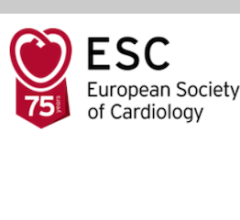
Getty Images
August 28, 2023 — Ferric carboxymaltose(FCM) did not improve a hierarchical outcome of death, heart failure hospitalizations and exercise function in ambulatory patients with heart failure with reduced ejection fraction (HFrEF) and iron deficiency, according to late breaking research presented in a Hot Line session at ESC Congress 2023.1
Previous studies have shown that FCM improves symptoms, quality of life and exercise capacity in patients with HFrEF and iron deficiency.2,3 Further evidence is needed regarding its effects on clinical events. HEART-FID examined the effect of FCM on a hierarchical composite of mortality, heart failure hospitalisations and 6-minute walk distance (6MWD) in ambulatory patients with chronic HFrEF and iron deficiency.4 The trial was designed as a single pivotal study based upon a special protocol assessment with the US Food and Drug Administration (FDA).
The trial enrolled patients with HFrEF (ejection fraction ≤40% within 24 months or ≤30% within 36 months of screening), iron deficiency,5 New York Heart Association functional class II to IV symptoms and on maximally tolerated background therapy for ≥2 weeks before randomization. The trial included patients with and without anemia. Participants were randomly assigned in a 1:1 ratio to intravenous FCM or placebo in addition to usual therapy for heart failure. Doses were administered at 0 and 7 days, and then every 6 months based on iron indices and hemoglobin levels.
The primary endpoint was a hierarchical composite of all-cause mortality at 12 months, heart failure hospitalizations at 12 months, and change in 6MWD from baseline to 6 months. The top secondary endpoint was a composite of time to first heart failure hospitalization or cardiovascular death over the duration of follow-up. Additional secondary endpoints included cardiovascular death.
A total of 3,065 patients were enrolled from 281 centers in 14 countries. The average age was 69 years and 34% were women. For the primary hierarchical endpoint, FCM resulted in modest numerical differences compared with placebo for each of the components of the composite. Specifically, at 12 months, 131 (8.6%) and 158 (10.3%) patients died in the FCM and placebo groups, respectively, and there were 297 and 332 heart failure hospitalizations, respectively. The mean change in 6MWD at 6 months was 8±60 meters and 4±59 meters in the FCM and placebo groups, respectively. The main comparison result had a p-value of 0.019 which did not meet the prespecified significance level of 0.01 required for regulatory success. The unmatched win ratio for the overall composite, comparing FCM with placebo, was 1.10 (99% confidence interval [CI] 0.99 to 1.23; p=0.019). While this indicated 10% more “wins” with FCM, it did not meet the prespecified significance level.
For the top secondary endpoint of time to first heart failure hospitalization or cardiovascular death during the total duration of follow-up, there were fewer events in the FCM group than placebo (16.0 vs. 17.3 events per 100 patient-years) with a hazard ratio (HR) of 0.93 (96% CI 0.81 to 1.06).6 For the secondary endpoint of cardiovascular death, there was a HR of 0.86 (96% CI 0.72 to 1.03).
Prespecified responder analyses for the change in 6MWD showed a >20% increased odds of a ≥10 or 20 meter improvement in 6MWD with FCM compared with placebo, with an odds ratio (OR) of 1.24 (95% CI 1.08 to 1.44) for improvement ≥10 meters at 6 months and OR of 1.27 (95% CI 1.09 to 1.49) for improvement ≥20 meters at 6 months.
Study author Dr. Robert Mentz of Duke Clinical Research Institute, Durham, US said: “The HEART-FID trial confirmed the safety of intravenous FCM in patients with HFrEF and despite suggesting potential outcome benefits did not meet its primary efficacy endpoint.”
For more information: www.escardio.org
Find more ESC23 conference coverage here
References:
- HEART-FID will be discussed during Hot Line 2 on Saturday 26 August at 08:30 to 10:00 CEST in room Amsterdam.
- Anker SD, Comin Colet J, Filippatos G, et al. Ferric carboxymaltose in patients with heart failure and iron deficiency. N Engl J Med. 2009;361:2436–2448.
- Ponikowski P, van Veldhuisen DJ, Comin-Colet J, et al. Beneficial effects of long-term intravenous iron therapy with ferric carboxymaltose in patients with symptomatic heart failure and iron deficiency. Eur Heart J. 2015;36:657–668.
- Mentz RJ, Ambrosy AP, Ezekowitz JA, et al. Randomized placebo-controlled trial of ferric carboxymaltose in heart failure with iron deficiency: rationale and design. Circ Heart Fail. 2021;14:e008100.
- Iron deficiency was defined as haemoglobin >9.0 g/dL and <13.5 g/dL (females) or >9.0 g/dL and <15.0 g/dL (males), and ferritin <100 ng/mL or 100 to 300 ng/mL with a transferrin saturation <20%.
- A 96% confidence interval was used for the secondary endpoints.


 August 29, 2025
August 29, 2025 









